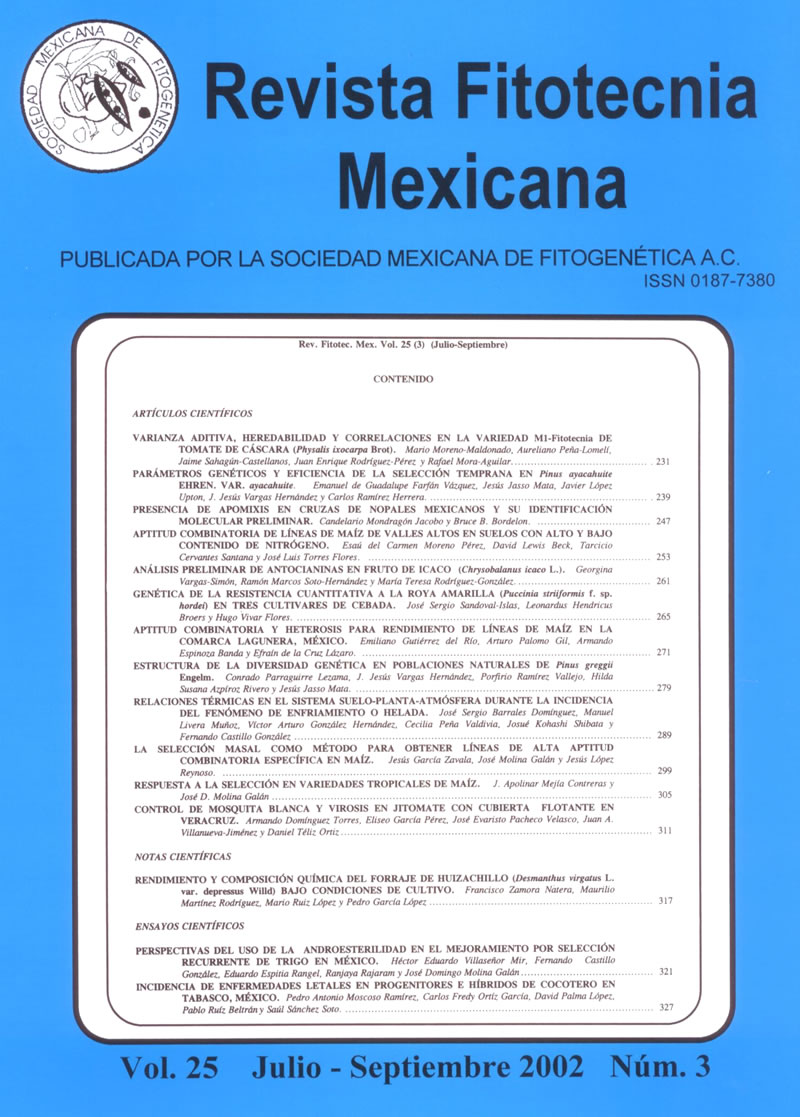MASS SELECTION AS A METHOD TO OBTAIN MAIZE LINES WITH HIGH SPECIFIC COMBINING ABILITY
Main Article Content
Abstract
The objectives of this work were to prove that the México Grupo 10 maize (Zea mays L.) variety, subjected to 6 cycles of stratified mass selection (C6), is more capable than its original version (C0) to produce inbred lines of high yield and high general and specific combining ability (GCA and SCA), and to estimate the phenotypic correlation between yield per se and GCA of inbred lines. In order to accomplish these purposes, 30 S3 lines were obtained from C0 and 30 S3 lines from C6 to make two groups of 30 topcrosses each using as tester C0. It was also obtained 25 single-crosses in chain crosses way (1x2, 2x3,..., 25x1) within each group of inbred lines. The two groups of 60 S3 lines, 60 topcrosses and 50 single-crosses were evaluated during the spring-summer season in 1998, at two localities in the State of México, under irrigation conditions, in a complete random block design with four replications. Results showed that the improved variety C6 produced a higher frequency of high yield single-crosses (SCA) than C0. On the other hand, the highest frequency of lines of high yield per se, although not always coupled to superior GCA, arose from C0. Because of it resulted a very low correlation value (r = 0.10) between yield of S3 lines per se and the yield of its respective top crosses as a measure of GCA.

